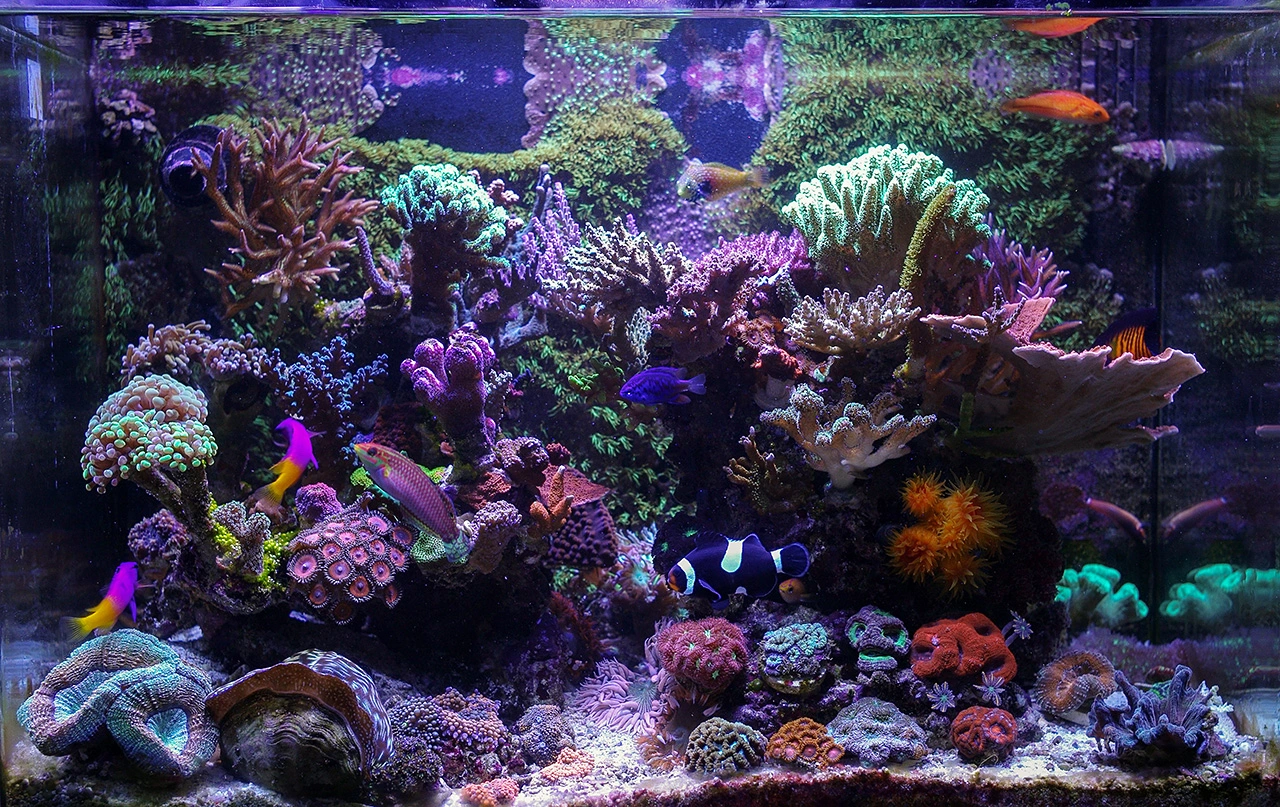Stunning 25-Gallon Reef Tank – Bunster's TOTM | NanoReef

Tank Specifications
Volume: 25 Gallons / 96 Liters
Dimensions (L × W × H):
23.6" ×
15.8" ×
15.8"
60.0cm ×
40.0cm ×
40.0cm
Equipment List
- Salt: Fauna Marin
Frequently Asked Questions
How do I set up my reef aquarium for optimal coral growth?
To set up your reef aquarium for optimal coral growth, begin by ensuring suitable lighting that enhances photosynthesis, such as LED setups like the Aqua Illumination Hydra 52. Use a combination of live rock for biological filtration and fine sand to create a healthy substrate. Incorporate water movement effectively with circulation pumps, like VorTech MP10w, to mimic natural ocean currents which aid in nutrient delivery to corals.
What type of filtration system should I use for my reef tank?
For a successful reef tank, consider using a combination of mechanical, biological, and chemical filtration. Implement a skimmer, such as the Skimz SH1, to remove organic waste. Use filter floss and media like Biohome for mechanical filtration. Furthermore, employ reactors with GFO and carbon to maintain water quality and clarity.
How often should I change the water in my reef tank and what size change is recommended?
Perform small water changes frequently to maintain water quality; a common practice is to change about 5% of the water (5 liters) every 3 to 4 days, using high-quality salt mixed with DI water. This helps to export waste and replenish essential nutrients.
What should I monitor in my reef tank to ensure a healthy environment for corals and fish?
Regularly monitor key parameters such as salinity (1.026), temperature (26-27°C), pH (7.9-8.2), calcium (420 mg/L), alkalinity (7.7 dKh), magnesium (1350 mg/L), nitrate (1-2 mg/L), and phosphate levels (0.10 mg/L). Consistent testing will help manage and stabilize your reef's chemistry.
What is the best feeding schedule for my reef tank inhabitants?
Feed your fish daily using high-quality pellets like TDO and New Life Spectrum Thera pellets. Corals can be target fed with specific foods like Fauna Marin LPS pellets or Reef Roids. Additionally, aim to dose bacteria and carbon sources regularly using products like Aquaforest Pro Bio S for beneficial bacteria.
How can I maintain proper calcium, alkalinity, and magnesium levels in my reef aquarium?
To maintain these essential levels, use supplemental products such as Aquaforest Component 1,2,3. A reliable dosing pump (like Jebao DP-4) can automate the delivery, currently recommended at 2 ml of each supplement hourly, totaling 48 ml per day, while regular water changes help balance these levels.
What steps should I take for regular tank maintenance?
Regular maintenance includes daily feeding, weekly filter floss changes, and assessments of water parameters. Every week, dose trace elements and target feed corals. Monthly, replace GFO, carbon, and ZEOvit stones as needed. Maintain a log of your maintenance schedule for consistency.
How do I ensure compatibility among different coral species in my reef tank?
To ensure compatibility, research the specific care requirements and aggression levels of each coral species. Providing adequate spacing, proper lighting based on their needs, and monitoring water flow will help create a suitable environment. Start by introducing corals gradually and observe interactions over time.
What types of corals can I successfully keep in my reef aquarium?
In a mixed reef aquarium, you can keep a variety of corals such as SPS (Stony) like Birdsnest and Acropora, LPS (Large Polyp Stony) such as Acan and Candy Cane, and soft corals like Zoanthids and Mushrooms. Research specific care needs for each type to ensure successful growth and health.